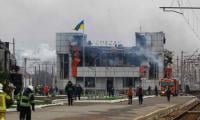Economic orthodoxy over the last six decades thought that the market mechanism would in time reduce economic inequality. This view was based on the 1955 paper by Simon Kuznets who argued that income inequality would first increase, then flatten out and in time decline through the process of market driven economic growth.
Now Thomas Piketty in his landmark study has provided new evidence to show that inequality of both wealth and income has been continuously increasing over the last three centuries.
Subsequently, the Oxfam Institute have come up with the famous estimate that the top one percent of the world’s population owns 50 percent of the world’s wealth while 99 percent of the world’s population owns the remaining 50 percent.
Income inequality in Pakistan has also been increasing sharply. My estimate, based on World Bank data adjusted for tax evasion, is that the richest 0.1 percent of Pakistan’s population (20,000 persons) has a monthly income of over Rs8,000,000 per person while the per person income of the poorest 60 percent of the population is about Rs6000 per month. Thus the income per month of the richest is 1300 times that of the poorest.
Piketty explains the increasing inequality in terms of his evidence that the rate of return on capital has been consistently much higher than the GDP growth rate so that over time the share of national income of the owners of capital assets continues to increase.
This is a plausible but only a proximate explanation of the inequality phenomenon. He has not explored the underlying factors rooted in the structure of capitalism. The fundamental design feature of this system is that some people own productive assets while others do not.
A related feature is that wages are usually less than the value of the products of labour and the capitalist can not only appropriate the difference in the form of profit but is impelled by competition to expand profits through reinvestment and technological change. Thus capital is essentially a social relation that is shaped by unequal power between the capitalist and the labourer.
Such a system of power would, therefore, have a structural tendency for increasing inequality between those who own productive assets and those who don’t, between those who have skills and those who don’t, between the powerful and the powerless.
In Pakistan the tendency of income inequality is based on a highly unequal distribution of productive assets. This is accentuated by a social structure and a form of governance that enlarges the power and income of the rich at the expense of the poor. There are five dimensions of this inequality.
First is the social, political and economic discrimination against women. This gives women relatively less access than men over productive assets, employment, education, judicial and police services.
The second dimension that reinforces inequality is that sections of society with religious identities different from those of the dominant sections are discriminated against in terms of employment, finance, upward social mobility, protection from violence against their persons and access over justice.
The third factor that exacerbates inequality is the system of public finance. In Western countries the tax system is progressive whereby a relatively high tax burden is placed on the rich and with the revenues so obtained the government undertakes public expenditure to provide services for the poor such as public education, health, transport and social protection.
In Pakistan by contrast due to the predominance of indirect rather than direct taxes, the poor bear a higher tax burden than the rich. Public expenditure is also loaded in favour of the rich: intra-city high speed corridors enable an increase in the speed of private vehicles but do little for those who walk to work; in public hospitals the poor patients are lying unattended in corridors while the influential patients get 5 star treatment in luxurious VIP rooms; and public sector educational institutions are concentrated in terms of both number and quality in the affluent areas.
The fourth is the spatial dimension. Those who live in remote areas have poorer access over markets, public services and infrastructure. This is a key factor in regional disparities in Pakistan. The latest UNDP study has shown that some districts in terms of per capita income are as affluent as developed countries while the backward districts fester at the level of Sub Saharan Africa.
I have argued elsewhere that regional disparities within the market system occur because regions with better infrastructure attract private investment and pull savings, educated and young persons from the backward areas, thereby making the developed regions even more attractive for future investment. This was called the process of Cumulative Circular Causation by Gunnar Myrdal.
Finally, markets in the rural areas are asymmetric with respect to the rich and poor. My research for the UNDP has shown that many rural markets are mediated by power. So that small farmers have to pay a higher price on their inputs and get a lower price on their output compared to large farmers. The evidence shows that the small farmers lose almost one third of their potential income to such asymmetric markets.
It is clear that the essential basis of high and growing inequality is the unequal distribution of productive assets. However, in Pakistan this process has been exacerbated by a configuration of social, cultural, power structures and associated government policy that has reinforced the market mechanism in accentuating income, gender and regional inequalities. New research, contrary to orthodox economics has shown that economic inequalities restrain economic growth itself.
In my humble opinion, what can be termed multidimensional inequalities also constrain the human potential of society, undermine democracy and create the possibility of violence. Time for a new economics and a new approach to public policy.
The writer is distinguished professor and dean, School of Humanities and
Social Sciences at the InformationTechnology University Lahore.
Email: akmal.hussain@itu.edu.pk















